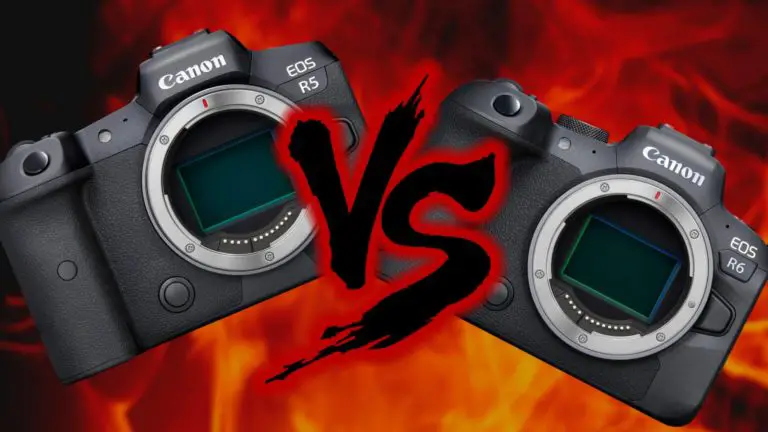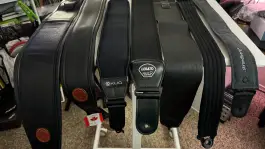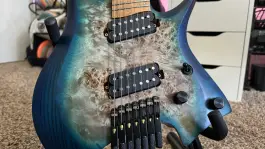In the early morning of July 9th, Canon hosted their REIMAGINE live-stream event and officially announced what was arguably the most anticipated camera in recent times—the Canon R5. There were rumors, also, of an R6 camera that may or may not have been announced, and Canon also made its existence real by heralding both cameras into the market at the same time. And while followers of the industry already knew a lot of the details via rumor sites, it was good to finally get these specs confirmed. But it brings up a really valid question: With both cameras now being released, what’s the actual difference between the Canon R5 vs R6, and which one is best for you?
As always, we try to keep our guides as updated as we can, and this one is no exception. As most impressions on these cameras are from pre-production units, there’s still a lot of wiggle room in specs, features, and general reactions. As new information comes in we’ll do our best to update this post accordingly.
Contents
Best for cinematic video: R5
- High Image Quality featuring a New 45 Megapixel Full-frame CMOS Sensor.
- DIGIC X Image Processor with an ISO range of 100-51200; Expandable to 1024001.
- High-Speed Continuous Shooting of up to 12 fps with Mechanical Shutter and up to 20 fps Electronic (Silent) Shutter.
Last update on 2025-04-19 / Affiliate links / Images from Amazon Product Advertising API
We’ll just jump to the meat of why many people are looking at these two cameras in the first place. For all-out image quality for high-end video image quality and post-production flexibility, the Canon R5 is arguably the better cinema camera out of the two.
Yes, both cameras have 10-bit 4:2:2 color and offer the C-Log color profile, but the R5 offers a few advantages.
Most notably, of course, being the fact that the Canon R5 can shoot 8K footage in either DCI or UHD ratios up to 30 fps in Raw with second-gen dual pixel autofocus. You don’t get Raw or 8K on the R6.
Our second favorite feature for cinema video is what they’re referring to as 4K HQ. Available in certain frame rates (29.97, 24, and 23.98), this mode uses the full 8K sensor and oversamples that at a 2:1 ratio down to a 4K image. This promises to bring some insane sharpness and detail to the 4K video files shot in this mode, and we’re looking forward to seeing more about this as more hands-on time is available.
We think that Canon’s decision to (finally!) add 5-axis in-body image stabilization (IBIS) to both the R5 and R6 is a massive step forward for the company’s offerings. Despite what a lot of cinematographers and filmmakers say about IBIS, we feel that this actually is a very useful application on the R5 for cinema camera and filmmaking purposes.
There are certain times where maybe a gimbal, tripod, slider, or other large support system isn’t necessarily possible, and from what we see with the current sample footage with the IBIS paired with an RF-mount stabilized lens, it’s definitely reliable. True, most of the time for professional cinematography you’d be turning this off to use on a larger support device, but for when you need it, having it there is extremely helpful.
The other notable difference is the types of codecs available. While both offer H.264 4:2:0 8-bit and H.265 4:2:2 10-bit, only the R5 offers All-I and IPB compression settings for these codecs, whereas the R6 only has IPB available (we hope to see this get updated in future firmware updates, for sure!).
All-I compression offers more keyframes of data and plays back better in your editor of choice, and we’ve previously discussed this in further detail in our cinema camera guide.
The unfortunate issue with many of these cinema-type features is that the R5 will definitely get warm. Overheating will quite likely be a factor when shooting in 8K, 4K HQ, and probably 4K 120p video modes. We still have yet to really see a lot of the details regarding the overheating in real-world scenarios, but it does look to be an issue that needs to be addressed.
Best for vlogging and YouTube: R6
- High Image Quality featuring a New 20 Megapixel Full-frame CMOS Sensor.
- DIGIC X Image Processor with an ISO range of 100-102400; Expandable to 204800.
- High-Speed Continuous Shooting of up to 12 fps with Mechanical Shutter and up to 20 fps Electronic (Silent) Shutter.
Last update on 2025-04-19 / Affiliate links / Images from Amazon Product Advertising API
While some YouTubers definitely go the full custom route of shooting cinematic footage and grading their own footage very extensively, this isn’t the norm for many YouTubers or vloggers. For that, we really like the R6 as an amazing YouTube or vlog camera.
The primary factor here is really the price. It’s ridiculously affordable for the sheer power you get in the R6 body. You’ll have 4K UHD up to 60fps and 1080p up to 120fps, which really covers the majority of any vlogger’s needs.
Note: Oddly enough, the R5 flips that: 4K DCI up to 120fps and 1080p up to 60fps—although Canon has stated that they’re looking at bringing 1080p120 to the R5 with a future firmware update!
Just like we mentioned above, both the R5 and R6 have 5-axis IBIS. This is the first time an EOS series camera has had IBIS, and it’s frankly many several years late. But it’s here, and we’re not mad about it! As a vlogging camera, the R6’s IBIS is a must, and it really makes this camera one of our top vlogging cameras—pending more review and analysis, of course, but I’m sure it’ll be our top pick for our updated vlogging guide soon!
While these are both “full-frame” cameras, it should be noted that, in 4K modes, the R6 technically has a crop. It’s a very minimal 1.07x crop, but it IS a crop. This means that a 50mm lens will be about 53mm at 4K, or a 35mm lens would be about 37mm equivalent. A 14mm lens would be 14.98mm, and an 85mm lens would work out to almost 91mm. Not egregious, but it’s definitely going to have an effect at some point.
The battery life in the R6 looks to outshine the R5 just simply based on having a smaller display, lower resolution viewfinder, and not needing to shoot 8K or 4K HQ. The R6 comes out on top, eking out about 40 extra shots according to CIPA standards. It’s not a lot, but it’s something.
While both cameras do have dual card slots, both of the slots on the R6 are SD UHS-II slots, allowing for more affordable dual-card and redundant recording. The R5 has a single SD UHS-II slot along with a much faster, and much more expensive CFexpress slot that is required for shooting the 8K and 4K HQ modes. This will be much more useful to vloggers and YouTubers who just need reliable storage, not crazy fast storage.
And while it’s technically a downside, not shooting with All-I compression and being forced into using IPB compression will actually save you storage space on video files. IPB is roughly a third of the file size of a comparable All-I video file.
Best for low-light video performance: R6
Most people understand that lower-megapixel count sensors are better for low light performance; and even better than that, larger pixels are key to seeing in the dark. Thanks to this, the R6 definitely takes the low-light performance crown from its much higher resolution sibling.
Both sensors are full-frame and measure 36mm x 24mm. The R6’s 20.1 MP sensor equates to a 5472 x 3648 image size, while the R5’s 46 MP sensor reads out at 8192 x 5464. And while that’s an absolutely insane resolution to pack in the same size full-frame sensor, it means that the pixel size needs to be smaller.
The R5’s higher resolution has pixels that are 4.40 µm in size (Canon lists this spec as the “pixel unit” size on their spec sheets at the moment). Not terrible, but when you compare to the R6’s 20.1 MP pixels measuring in at 6.56 µm—a 49% increase in pixel size.
Pair that with the ability to increase the native ISO sensitivity from the R5’s 100-51,200 to an astounding 100-102,400 on the larger pixels of the R6 and you have what is looking like a true low-light beast.
Canon is definitely marketing the R6 as being the go-to low-light performer of the two, and for vloggers who are often out past sunset or in dimly lit rooms, this will make the R6 an invaluable tool for these situations.
Best for most photographers: R5
A lot of the hype around the R5 and R6 have definitely been coming from the video fans, but these cameras are actually extremely capable stills cameras, and we shouldn’t forget that. Yes, both of these cameras are excellent for photography. But for most photographers, and those who don’t need superb low-light performance, we would suggest the R5 as the better for professional photographers.
Of course, there’s the sensor size at 45 megapixels and massive image size, but there are some features that otherwise directly benefit photographers. Primarily, the larger LCD display and electronic viewfinder (EVF). The R5’s rear display is 3.2″ at 2.1 million dots vs the R6 3.0″ at 1.62 million dots—not a huge difference, but enough to mention.
The EVF, however, is a much higher resolution on the R5. While they’re both 100$ coverage at 0.76x magnification, the R5 viewfinder is 5.76 million dots vs the 3.69 million dots of the R6. For professional photographers—who always have their eye up to the viewfinder—this makes a big difference, and that EVF is going to give a much better representation of what you’re shooting.
The autofocus system is pretty similar across both models, with the R5 being less sensitive in slightly darker scenarios, but overall an identical system with no real reason to pick one over the other just for AF systems.
The other photography features are also identical. Max shutter speed of 1/8000 (we’d like to see this crank up higher at some point with the electronic shutter), max flash sync of 1/200, 384-zone exposure metering, AF coverage of 100% of the sensor and 1053 focus points. The two are really stacked quite comparably as stills cameras.
They also have identical drive systems. Both the R5 and R6 can shoot 12 frames per second with the mechanical shutter and 20 frames with the electronic shutter. Both of these figures are extremely high, and you’ll get that in both cameras.
Of course, with the R5’s sensor at more than double the size of the R6, that 45 MP sensor will only buffer about 87 images to the SD UHS-II slot, but the CFexpress card will buffer up to 180 shots in burst mode. The 20.1 MP sensor of the R6 will net you a whopping 240 shots to its dual SD UHS-II cards.
While both cameras look to be absolutely capable stills cameras, we’re currently giving the nod to the R5 as the better for professional photographers because of the higher resolution sensor and viewfinder. These two features alone definitely put the R5 ahead when pitching the cameras to pro photographers.
Best for low light and concert photography: R6
But wait, didn’t we just say that the R5 is the best of the two for photographers? Yes, and we stand by that. However, for certain types of photography, we actually like the R6 because of its much better low light performance.
As we mentioned above, the R6 is a lower megapixel sensor and therefore has much larger pixels than the R5. This means that they’re more receptive to light hitting the sensor, as each pixel is a larger “bucket” to receive that light.
With the larger pixel unit size on the R6, the sensor itself is just more suited for lower light operations. This also means that the ISO sensitivity can be raised to a much higher usable level on the R6—ISO 100 to 102,400 as opposed to the max 51,200 on the R5, which is still no slouch.
The low light focus sensitivity is also better on the R6, reaching down to -6.5 EV up to 20EV, whereas the R5’s floor is -6 EV. Again, not a huge difference, but a difference that we are confident will be welcomed by any music photographer for sure.
Having the higher buffer is also useful, but it’s definitely not a deciding factor for most concert photographers we know. But the better battery life is absolutely a helpful spec in favor of the R6.
While missing out on the super-high resolution of the R5 is, admittedly, a bit of a bummer it’s worth the tradeoff of getting better low-light performance if you are a concert photographer, club/nightlife photographer, or anyone else who works in less than ideal lighting conditions.
What are the big similarities between the R5 and R6?
Despite being fairly distinct cameras with a huge difference in price and a moderate difference in features, these two camera bodies are actually more alike then you may be inclined to believe. Starting with the actual bodies, they’re definitely similar, with a new body design, bringing back the beloved joystick and rear scroll wheel of professional Canon cameras past.
While there are slight differences (slightly larger display on the R5, a mode dial, and no top screen on the R6), the majority of the body design is identical between the two. Having these pro control options across both devices is definitely nice to see, especially given the price differences.
Both devices can shoot 4K with full dual pixel autofocus (identical AF on both devices), 10-bit 4:2:2 video, C-Log, and have clean 10-bit 4:2:2 HDMI output. Both devices have the 29:59 record limit in all modes that don’t already have a thermal-limited record duration (not an issue on the R6, of course), and both have an articulating vary-angle LCD display.
Speaking of that autofocus, both units do have the same upgraded Dual Pixel Autofocus II. Canon has implemented the usual zone, single point, spot and area AF features with the new Face+Tracking AF mode, which not only tracks faces and eyes, but also heads (even while in a helmet or the subject’s face isn’t visible). The new AF system can also track pets and animals, including birds. We can’t wait to test out what this new AF system is capable of, and both bodies get this new system.
You’ll get Wi-Fi and Bluetooth on both devices. The R5 has 802.11a/ac/b/g/n with both 2.4 and 5 GHz bands and Bluetooth 5.0, whereas the R6 only has 802.11b/g/n with 2.4 GHz and Bluetooth 4.2, but these differences shouldn’t be too major—we’re just sad to see Wi-Fi 6 not showing up on either device, as this would help transfer the large files both of these cameras can generate.
There’s USB Type-C 3.1 Gen 2 with in-camera charging on both, along with micro HDMI (micro? Why not mini?? C’mon, Canon, micro is terrible!), mic in, headphone out, and two different battery grips available.
And finally, both the R5 and R6 should make an excellent streaming camera. There may be some overheating issues with the R5 (especially at higher resolutions), but as firmware gets ironed out we’d assume this would be improved. But both cameras would be excellent sources fed into an Elgato Cam Link or similar capture card.
Final thoughts about the Canon R5 and R6
Honestly, for the first time in a while, a camera announcement has managed to live up to the pre-release hype surrounding the rumors. The sheer power available in both of these camera bodies is well beyond anything we’d expected out of the next year or two, and we’re really excited to see how they mature over the next few years.
Yes, there’s still a lot of hype for cameras that most people haven’t used yet, but remember that when the EOS R was released two years ago most people shunned it and were disappointed. It wasn’t far after that when suddenly everyone was in love with the EOS R and many YouTubers had started switching to the EOS R as their main camera despite their initial misgivings.
Now we have not one, but two cameras with full-frame sensors and (mostly) no crop in 4K with great AF, C-Log, and more, and it’s actually exciting. Personally, we haven’t been this excited for a camera since the 5DmkII, and we’re looking forward to seeing where Canon goes next after this release.
What do you think about the R5 and R6? Any questions about the two cameras, or anything we missed? Leave a comment below and let us know your thoughts!







![How to use a DSLR or mirrorless camera as a webcam [2022]](https://www.creatorbeat.com/wp-content/uploads/2020/04/DSLR-as-a-webcam-blog-265x149.png)




0 thoughts on “Canon R5 vs R6: Which is best for you?”